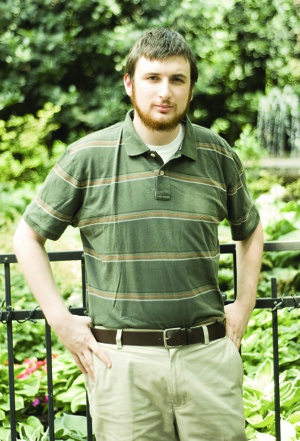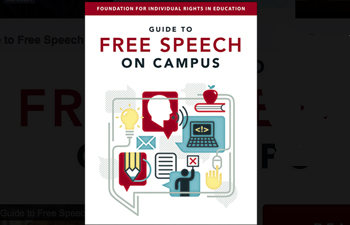Today’s college students enjoy the ability to speak their minds in unprecedented ways. Powered by omnipresent high-speed Internet access, students may sound off at all hours via a sparkling array of online outlets: Twitter, Facebook, Tumblr, Instagram, email, instant messaging, and blogs, just to name a few.
The ancient among us — by which I mean those who graduated from college before, say, the year 2002 — may not realize the enormity of this change. While old standbys like phone calls, text messages, and even face-to-face conversations have certainly not been forsaken, student speech — to each other, and to professors, parents, and the public — has increasingly moved online.
On balance, this shift is a positive development. Students may now communicate with each other and the wider world at a speed impossible just 20 years ago. The vastly expanded audience made possible by the Internet’s hyperconnectivity means student ideas now rocket around the globe instantly, no longer confined to the quad or the classroom.
However, because student speech is more visible than ever before, the threat of censorship has grown accordingly. An all-night conversation that might have remained behind dorm room doors a decade ago is now just as likely to be emblazoned upon a Facebook page, where it may be discovered the next morning by a far wider audience than intended. Given this new visibility, all manner of student speech — criticism of professors or university administrators, heated political debate, dissenting or unpopular opinions, embarrassing jokes — may provoke dangerous attempts to censor and punish student expression.
That’s why today’s students need an education in freedom of expression on campus, perhaps more than ever.
The Foundation for Individual Rights in Education (FIRE) — where I work as Director of Legal and Public Advocacy — recently updated our free Guide to Free Speech on Campus.
In our experience, the best way to combat campus censorship is to educate college students about their right to express themselves. With that in mind, our new Guide offers readers a thorough but accessible treatment of the contours of the right to free expression. We cover the different speech rights afforded K-12 and college students; exceptions to the First Amendment, such as true threats, obscenity, and incitement; the history of the First Amendment through the years; the difference between speech rights at public and private campuses; common types of restrictions on student speech; and more than 20 scenarios based on actual FIRE cases.
The first edition of our Guide, published in 2005, reached more than 135,000 students, faculty members, alumni, administrators, and citizens nationwide, and we’re hoping this new edition reaches many more.
Are students really punished for their speech?
Unfortunately, yes. I often tell the student, faculty, and administrator audiences I talk to across the country that the human impulse to censor is likely just as old as the ability to communicate. As long as we’ve been talking to each other, I’m sadly certain that we’ve also been attempting to silence each other. Being populated by humans — smart, talkative humans — campuses are no exception.

There are a few common types of campus censorship that we see semester after semester here at FIRE. For example, many instances of campus censorship involve criticism of university administrators. Take the case of former Valdosta State University student Hayden Barnes, who was expelled after peacefully protesting the proposed construction of a $30 million parking facility on campus. Hayden, a dedicated environmentalist, thought the money would be far better spent on greener initiatives — expanded bus services, for example, or a shift to biodiesel vehicles.
For his efforts, which included a letter to the editor of the student paper, posting flyers around campus, and contacting administrators, Hayden earned the ire of the university’s president, who called Hayden in for a meeting and explained that Hayden had “embarrassed” him and that the parking facility was to be his “legacy.”
Frustrated, Hayden posted a cut-and-paste collage on his personal Facebook page a few days later, mocking the president’s remarks. What Hayden didn’t know was that his Facebook page was being monitored by the president, who, after seeing the collage, ordered Hayden “administratively withdrawn” — i.e., expelled. With FIRE’s help, Hayden — who is now completing law school — secured the assistance of noted First Amendment attorney Robert Corn-Revere. In the ensuing civil rights lawsuit, still ongoing, the president has been found personally liable for violating Hayden’s due process rights.
Further examples are numerous, and equally shocking: the student suspended for criticizing his college’s cozy relationship with a financial services provider on the school’s Facebook page; the student charged with “disorderly conduct” for mocking his campus’ lack of scooter parking in an email to administrators; the students ordered to take down a “free speech wall” open to passersby by campus police because it contained profanity. Our case archives are depressingly crowded with more examples.
I should note that FIRE is proudly non-partisan — which is important, because in the years since our founding in 1999, we’ve witnessed the censorship of student and faculty speech from across the ideological spectrum. Whether it’s the College Republicans, Students for a Democratic Society, Young Americans for Liberty, Students for Sensible Drug Policy, or any other student group engaging in free expression, we stand ready to defend their right to do so.
Faculty members are censored, too
Students aren’t the only campus community members whose criticism of their institution has prompted censorship, as University of Wisconsin – Stout Professor Jim Miller’s experience demonstrates. Miller, a sci-fi aficionado, had affixed a poster referencing a line from an episode of the cult hit television series “Firefly” near his office door: “You don’t know me, son, so let me explain this to you once: If I ever kill you, you’ll be awake. You’ll be facing me. And you’ll be armed.” A few days later, Miller found that the poster had been taken down, and he was later notified via email by Lisa Walter, Stout’s Chief of Police, that she had removed it because it “refer[s] to killing.”

In response, Miller told Walter to “respect [his] First Amendment rights.” Walter warned Miller that the poster could be “interpreted as a threat,” and threatened him with a criminal disorderly conduct charge for any further postings. Soon thereafter, Miller affixed a new poster, reading “Warning: Fascism” and “Fascism can cause blunt head trauma and/or violent death.” After that poster was removed, Miller was summoned to a meeting with the university’s “threat assessment team.”
After FIRE’s intervention — and criticism from “Firefly” fans worldwide, national media outlets, two of the show’s stars, and legendary sci-fi author Neil Gaiman — the university reversed itself and announced that it was developing a new protocol for handling “threats.” You can check out a short film about the case, featuring an interview with Gaiman, here:
Miller’s case is just one of many instances of faculty threatened or punished for protected speech. There’s the veteran Brandeis professor found guilty of racial harassment for criticizing the use of the slur “wetbacks” in his Latin American politics class (he had to utter the word to criticize it); the Southwestern College professors banned from campus for protesting outside the school’s tiny “free speech patio”; the University of California, Santa Barbara professor investigated for sending an email expressing his view of the Israel-Palestine conflict to his class; the Purdue University Calumet professor charged with “harassment” and “discrimination” on the basis of protected speech posted on Facebook; and so forth. Again, our case archives are replete with similar examples.
For over 200 years, the First Amendment and the principles it embodies have proven remarkably resilient, protecting free speech through technological revolutions unimaginable when the Bill of Rights was ratified. But with each new advance in communication comes new avenues for censorship — so today, more than ever, students and faculty must educate themselves about their right to free speech on campus.
William Creeley is Director of Legal and Public Advocacy for the Foundation for Individual Rights in Education (FIRE; thefire.org), a non-partisan, non-profit organization dedicated to defending student and faculty rights at our nation’s colleges and universities. A 2006 graduate of New York University School of Law, William has coauthored amicus curiae briefs submitted to the Supreme Court of the United States and the United States Courts of Appeals for the Third, Ninth, and Eleventh Circuits. William has advocated for student and faculty rights on national cable television and radio on behalf of FIRE, and has spoken to students, faculty, and administrators at events across the country and online. William’s writing has appeared in the Huffington Post, Chronicle of Higher Education, Jurist, Inside Higher Ed, Daily Journal, and other outlets.

